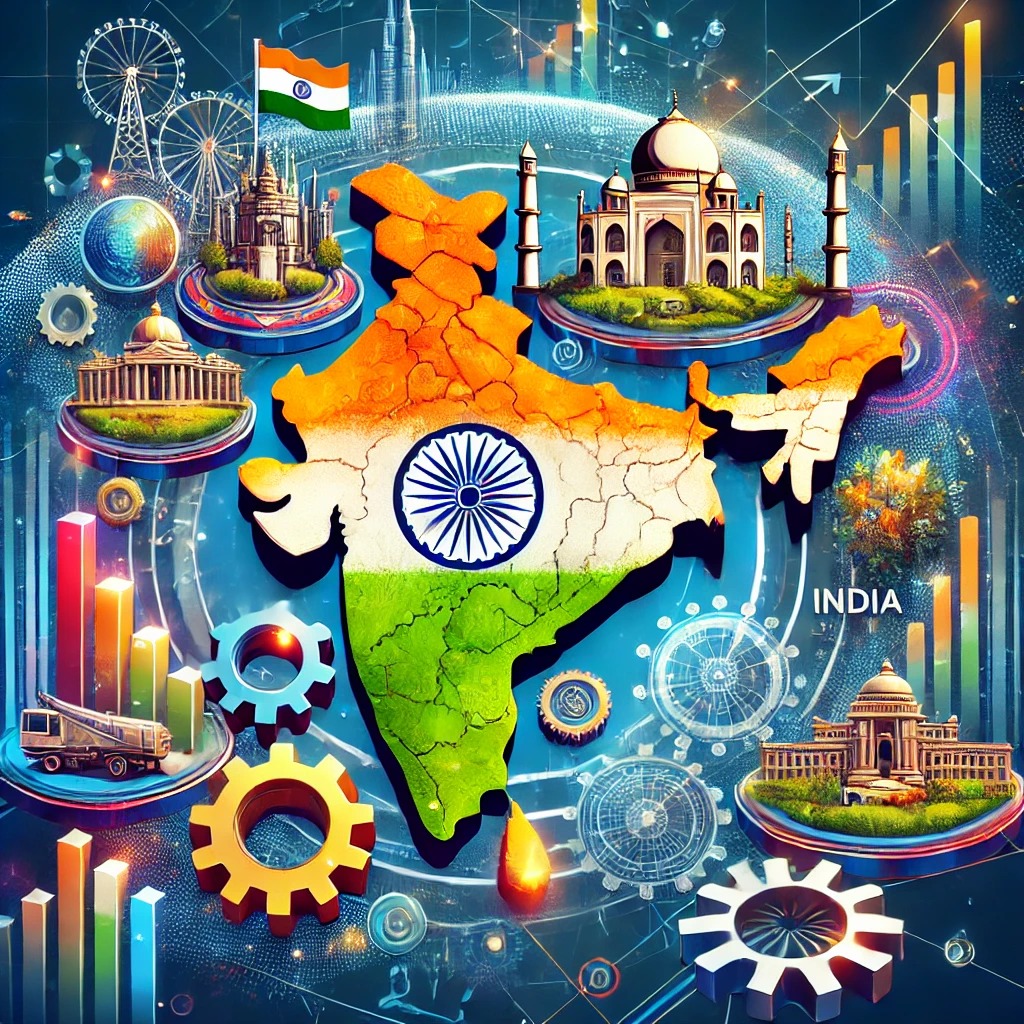How India’s 6 States, Contributing 67% of GDP, Are Shaping Competitive Federalism at Davos

The participation of six Indian states—Andhra Pradesh, Maharashtra, Telangana, Tamil Nadu, Uttar Pradesh, and Kerala—at the World Economic Forum (WEF) in Davos underscores a pivotal shift in India’s economic governance. These states, which collectively account for 67% of India’s GDP as of FY 2023, are no longer just contributors to the national economy but active leaders in shaping India’s global economic narrative. Their proactive engagement at Davos serves as a testament to India’s emerging model of competitive federalism, where states are driving innovation, attracting investments, and shaping their own growth trajectories in an increasingly decentralized and dynamic landscape.
Their presence at Davos highlights a critical shift in India’s governance model, where states are becoming increasingly proactive in shaping their own growth trajectories. By creating tailored policies and showcasing their unique strengths, these states are carving out their own economic identities and establishing themselves as global investment hubs.
This dynamic competition among states is not just about attracting capital; it’s about positioning India as a world leader in a rapidly evolving global economy.
As India’s federal structure continues to evolve, states are increasingly taking center stage in driving economic growth. This growing competitiveness is reshaping the dynamics of investment attraction and creating a new era of state-level economic power. With combined Gross State Domestic Products (GSDP) that add up to ₹1,83 lakh crore, these states are not just contributing to India’s national economy—they are defining the future of India’s economic competitiveness on the world stage.
Evolution of Competitive Federalism: A Historical Perspective
India’s journey toward a more competitive federal structure has been gradual, but its pace has accelerated in recent years. Historically, economic policy in India was largely driven by the central government, with states playing a more passive role. However, post-liberalization in the early 1990s, states began to realize the importance of regional development in a rapidly globalizing economy.
With the introduction of the Goods and Services Tax (GST) in 2017, states gained greater autonomy over their own revenue collection, leading to more competitive tax policies and better fiscal management. States such as Gujarat and Maharashtra have set the bar for infrastructure development, industrial policies, and ease of doing business. These policies spurred job creation, attracted foreign investments, and helped turn these states into economic powerhouses.
Over the last decade, other states have followed suit. Telangana, for example, has evolved from a traditional agrarian economy to a thriving hub for technology, with Hyderabad emerging as a top IT destination. Tamil Nadu has strengthened its position as the industrial capital, focusing on automobile manufacturing and renewable energy. Uttar Pradesh, once known for its challenges, has become one of India’s leading investment destinations with its focus on infrastructure development and industrialization.
States as Catalysts for Investment Attraction
Indian states are now competing fiercely to attract investments, with each state offering a unique value proposition to businesses. This shift has been evident in the state-level initiatives at Davos, where Chief Ministers and state representatives highlighted their achievements, investment potential, and policy reforms.
For instance, Telangana presented itself as a technology and innovation hub, while Tamil Nadu showcased its manufacturing prowess. Maharashtra used the platform to promote its infrastructure development and ease of doing business. Uttar Pradesh, with its focus on improving connectivity and industrial development, attracted major investments in sectors like textiles, food processing, and IT.
The rise of state-led initiatives is not just about attracting investments—it’s about creating jobs, enhancing social infrastructure, and ensuring sustainable growth. By focusing on their strengths and tailoring policies to specific sectors, states are positioning themselves as economic leaders in their own right.
Welfare Schemes and Investments: A Balanced Approach
Interestingly, this surge in state competitiveness is happening against the backdrop of several welfare schemes announced by various state governments, especially in light of the upcoming elections. Many states have launched ambitious welfare programs aimed at improving education, healthcare, and rural infrastructure. This shift towards welfare has raised important questions about balancing development and social welfare.
However, the two are not mutually exclusive. States are increasingly recognizing that economic growth and social welfare must go hand in hand. Investment attraction creates jobs and revenue, which can, in turn, fund welfare schemes that improve the lives of millions. States like Kerala have exemplified this by focusing on inclusive growth, where investments in sectors such as tourism and healthcare contribute to both economic development and social well-being.
The Competitive Federal Structure of India: A Future Outlook
India’s competitive federalism is set to become even more significant as states continue to innovate in policy and governance. In this context, states must continue to evolve, ensuring that investment-friendly policies align with the welfare of their populations. The future will likely see more inter-state collaborations and knowledge sharing, allowing states to build on each other’s successes.
The example of how states are participating in forums like Davos is a powerful testament to India’s maturing federal structure, where regions no longer rely solely on the center but also shape their own destinies. This transformation—driven by state-level governance, policy reform, and a focus on both investment and welfare—will define India’s economic future.
Conclusion
India’s competitive federalism is one of the most promising developments in the country’s economic landscape. States are stepping up, becoming catalysts for change, and creating an environment where investments and welfare coexist. This shift signals a new era for India—one where states will not just contribute to national growth, but also drive it from the front.
